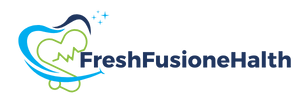The evolution of healthcare has been significantly influenced by the integration of advanced technology, leading to improved patient outcomes and more efficient healthcare delivery. One exemplary advancement within this scope is the Veterans Affairs VA Remote Patient Monitoring (RPM) system. This innovative approach to healthcare enables medical professionals to monitor and manage patients’ health conditions from a distance, leveraging various technological tools. This has been particularly beneficial for veterans who may face challenges accessing traditional healthcare facilities due to distance, mobility issues, or other constraints.
The Structure of VA Remote Patient Monitoring
The VA RPM system comprises several key components that work harmoniously to ensure efficient remote healthcare delivery. The monitoring devices include wearables like heart rate monitors, blood glucose meters, and blood pressure cuffs. These devices are designed to capture vital health data, crucial for monitoring chronic conditions and managing acute medical episodes.
Secondly, the data transmission infrastructure is vital to the system’s functionality. This involves secure communication networks facilitating real-time data transfer from the patient’s monitoring device to the healthcare provider’s dashboard. Given the sensitive nature of health data, these networks are fortified with encryption protocols to ensure patient confidentiality and data integrity.
Another essential component is the healthcare provider’s interface. This sophisticated software platform typically aggregates and analyzes incoming data, providing healthcare professionals with actionable insights. This interface allows providers to track patient progress, adjust treatment plans, and swiftly respond to alarming trends.
Technologies Enabling Efficient Monitoring
Several technologies play vital roles in the success of VA RPM systems. One such technology is Bluetooth, which enables wireless communication between monitoring devices and mobile phones or tablets. This facilitates seamless data collection without intrusive or cumbersome cables, ensuring patients can go about their daily lives without disruption.
Moreover, cloud computing provides a scalable solution for the storage and accessibility of vast amounts of patient data. Cloud platforms store data efficiently and provide healthcare providers with easy access to historical health records, aiding in comprehensive patient assessments and long-term health management.
Interoperability is another critical technological aspect of the VA RPM system. It ensures that various devices and platforms can work together seamlessly. By employing standardized protocols and APIs, these systems can integrate with existing healthcare infrastructures without significant overhaul, allowing for smoother implementation and utilization.
Benefits for Veterans and Healthcare Providers
The VA RPM system’s advantages extend beyond mere convenience. For veterans, it offers enhanced access to healthcare services. High-risk patients can receive vigilant monitoring and timely interventions without lengthy hospital stays or frequent clinic visits. This approach improves patient satisfaction and reduces the risk of hospital-related complications such as infections.
For healthcare providers, VA RPM systems streamline operations by improving workflow efficiency. Remotely monitoring patients allows providers to allocate resources more effectively, reducing unnecessary hospital admissions and optimizing care management processes. Moreover, the data-driven insights from RPM can aid in preventative care strategies, ultimately reducing the long-term burden on healthcare systems.
Privacy and Security Considerations
Incorporating technology into healthcare invariably introduces concerns regarding privacy and security. The VA RPM system addresses these challenges through stringent data protection measures. Data encryption safeguards information during transmission, while strict access controls ensure that only authorized healthcare personnel can view patient data. Regular audits and system updates enhance security by proactively identifying and addressing potential vulnerabilities.
Additionally, patients are educated on the importance of safeguarding personal devices against cyber threats. Recommendations include using strong, unique passwords, ensuring devices have the latest security updates, and being vigilant about phishing scams. By fostering a culture of cybersecurity awareness, the system adds an extra layer of defense against breaches.
The Future of VA Remote Patient Monitoring
The future of VA RPM promises even more advanced capabilities driven by continuous innovation in healthcare technology. As monitoring devices become more sophisticated, they will collect even more detailed data, providing a comprehensive view of patients’ health. Integrating more robust data analytics tools will allow providers to deliver increasingly personalized care, tailoring treatment plans based on predictive health trends.
Moreover, as connectivity improves with the expansion of 5G networks, data transmission will become faster and more reliable, further enhancing the effectiveness of remote monitoring. VR and augmented reality applications could also emerge, offering virtual consultations that simulate in-person experiences, thus broadening the scope of telehealth services.
Challenges and Considerations
While VA RPM systems present numerous benefits, challenges must be addressed to ensure broad adoption and efficiency. One significant challenge is the digital divide; not all veterans have equal access to the technology necessary for effective remote monitoring. Bridging this gap requires initiatives to provide essential devices and connectivity to underserved populations.
Additionally, healthcare providers need adequate training to use RPM platforms and interpret data accurately and effectively. This necessitates ongoing professional development and investment in user-friendly systems to reduce the learning curve. Furthermore, policy frameworks must evolve to support remote care innovations, addressing issues such as reimbursement and regulatory standards. Addressing these challenges will ultimately pave the way for a more accessible and efficient VA RPM system that benefits veterans and healthcare providers alike.
Conclusion
The VA Remote Patient Monitoring (RPM) system represents a pivotal shift in healthcare delivery, leveraging technology to extend high-quality care to veterans, regardless of location. Through platforms like DocVA, healthcare providers can better utilize RPM to improve outcomes and efficiency by understanding its underlying technologies and addressing associated challenges. As this field continues to grow, sustained innovation and strategic implementation will be critical to unlocking its full potential, ultimately enhancing the health and well-being of veterans across the nation.
Overall, VA RPM is a powerful tool that has the potential to revolutionize healthcare delivery and improve patient outcomes, making it an integral part of modern healthcare systems. As technology advances and new capabilities are introduced, the possibilities for remote monitoring within the VA system will only continue to expand, providing even more benefits for veterans and healthcare providers. It is an exciting time for healthcare innovation, and we can look forward to a future where telehealth significantly enhances the overall health of our nation’s veterans. Therefore, healthcare providers and policymakers must stay informed about these developments and work together to ensure all veterans access high-quality remote care services through initiatives like DocVA.




